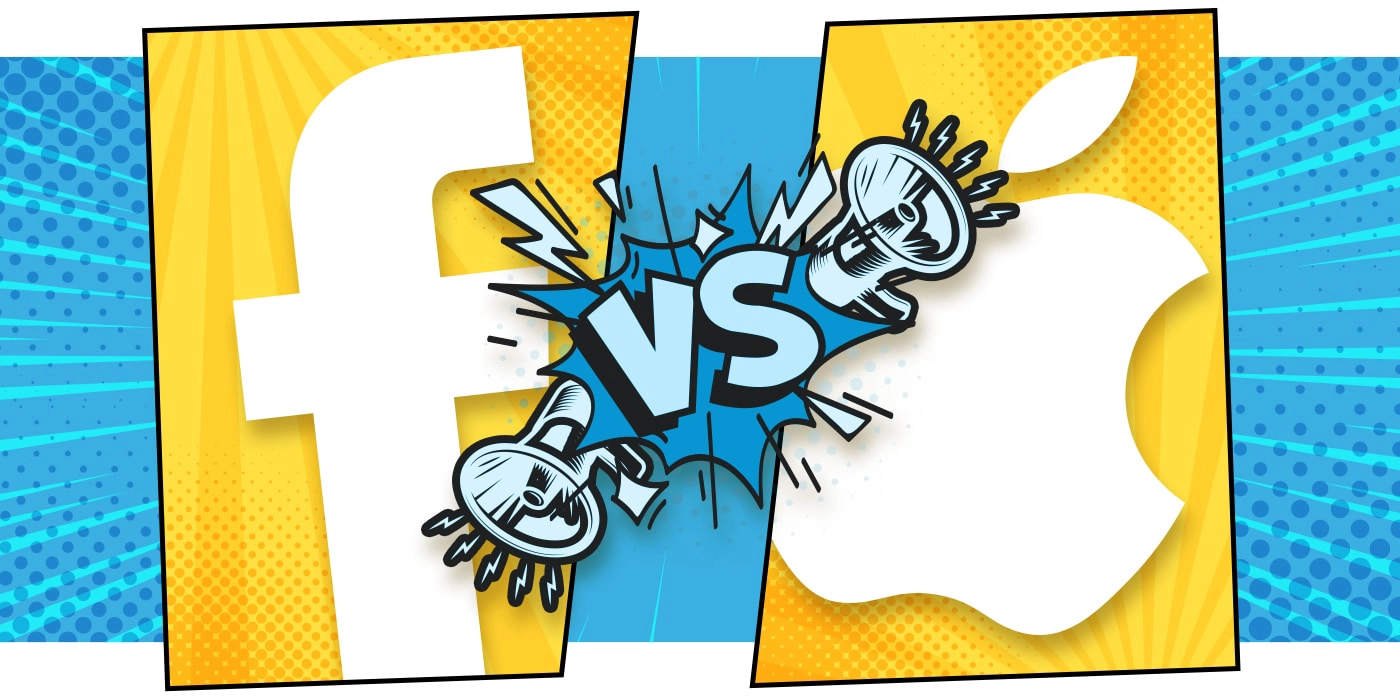When two tech titans like Apple and Facebook collide, there’s bound to be plenty of commotion left in the wake. Recent iOS updates have made an impact on Facebook ads. But as it turns out, Facebook had been preparing for the ramifications of these updates months before they were released. Here’s what’s going on.
The Clash of The Tech Titans: What’s Fueling the Feud Between Facebook & Apple?
Apple Swings for Consumer Privacy: It all started last summer at Apple’s virtual Worldwide Developers Conference with something known as an IDFA. An acronym for “Identifier for Advertisers,” IDFA gives each iOS device a unique code that generates data for targeted mobile ad campaigns. In June of 2020, Apple declared at its conference that its iOS 14 update would make IDFA an optional feature— allowing consumers to forgo ad tracking on each of their Apple devices. Once the changes are in place, apps will show consumers an AppTrackingTransparency (ATT) pop-up screen, at which point, all consumers will have to do to turn off ad tracking is tap a button.
Apple – which views the changes as part of their ongoing campaign to promote consumer privacy – expects the changes to occur this spring. Every application available in the App Store will be required to comply by law.
Facebook Fights for the SMB Community: Facebook – described by Forbes as the loudest critic of Apple’s new feature – has criticized the change’s potentially damaging effects on the small business community, predicting a significant decrease in revenue from mobile users. The social media and advertising giant has released an Aggregated Event Measurement protocol which – with the help of the Facebook pixel – will give businesses the ability to measure web events from iOS 14 devices after the ATT feature is released.
How IDFA Changes Will Impact SMB Advertising
Currently, approximately 70% of iOS users share their data. It is estimated that percentage will drop to 10-15% after Apple makes IDFA optional this spring. Considering the iOS 14 update will make it incredibly accessible and convenient for users to opt-out of sharing their data, it’s no surprise the vast majority of marketers and business owners are highly concerned.
Upon hearing the news about Apple’s iOS 14 update, many companies (Facebook included) exclaimed that the decision to make IDFA optional would demolish ad networks and seriously impact the businesses who advertise on them. After all, opting out of IDFA doesn’t mean no more ads; it simply means advertisements once tailored to consumer’s interests will now be replaced with less relevant ads.
So, what will this mean for targeted advertising? How can marketers and small businesses access the data that’s so crucial to their ad campaigns’ optimization and performance?
Going forward, app developers may use Apple’s SKAdNetwork – which doesn’t rely on IDFA – to collect campaign-level data and track conversions. As such, SKAdNetwork is now slated to become an essential tool for advertisers everywhere. Learn more about SKAdNetwork here.
In addition to its Aggregated Event Measurement protocol, Facebook has released several guidelines to assist businesses and advertisers in using Aggregated Event Measurement, which you can read more about here.
Stressed? Confused? We’ve Got You Covered
Digital ads were complicated before two tech titans started feuding; we understand how you may find them even more stressful now. Don’t let the digital drama throw you off course—leave your advertising to the pros and allow us to focus on our wheelhouse so that you can focus on yours. That’s how we succeed at helping you grow your business.




